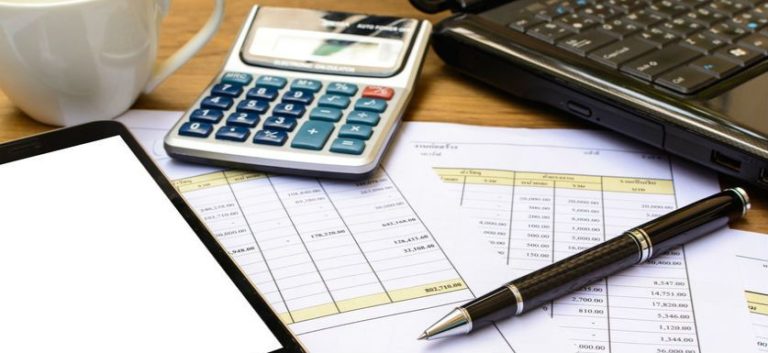
Unlike temporary accounts, there is no carried forward balance for permanent accounts though. Therefore, the length of the accounting period only matters to evaluate changes in the ending balance of permanent accounts. Insufficient documentation is another challenge businesses face when managing temporary and permanent accounts. Without proper documentation, it can be challenging to track financial transactions accurately.
Liability accounts
Your COA allows you to easily organize your different accounts and track down financial or transaction information. Permanent accounts come with certain features or characteristics. The management of ABC company decides to dispose of one of its properties worth $15 million to settle its bank loan worth $12 million. Shaun Conrad is a Certified Public Accountant and CPA exam expert with a passion for teaching. After almost a decade of experience in public accounting, he created MyAccountingCourse.com to help people learn accounting & finance, pass the CPA exam, and start their career.
Temporary and Permanent Accounts
As they reflect the balances since inception, they provide valuable information to key stakeholders. Asset accounts – asset accounts such as Cash, Accounts Receivable, Inventories, Prepaid Expenses, Furniture and Fixtures, etc. are all permanent accounts. Contra-asset accounts such as Allowance for Bad Debts and Accumulated Depreciation are also permanent accounts. A few examples of sub-accounts include petty cash, cost of goods sold, accounts payable, and owner’s equity. Instead, all balances from 31 December 2022 are carried over to 1 January 2023.
How Can HighRadius Enhance the Management of Temporary and Permanent Accounts?
Capital accounts – capital accounts of all type of businesses are permanent accounts. This includes owner’s capital account in sole proprietorship, partners’ capital accounts in partnerships; and capital stock, reserve accounts, and retained earnings in corporations. Your year-end balance would then be $55,000 and will carry into 2023 as your beginning balance. This permanent account process will continue year after year until you don’t need the permanent accounts anymore (e.g., when you close your business). Due to the cumulative nature of permanent accounts, they are perfect to keep track of assets such as equipment or inventories, accounts receivables, loans, accounts payables or equity.
Key Takeaways

Misclassification can also lead to over- or under-reporting of revenues and expenses, negatively impacting the business’s bottom line. In this blog, we’ll explore the key differences between temporary and permanent accounts and understand the key role they play in ensuring accurate financial reporting. To avoid the above scenario, you must reset your temporary account balances at the beginning of the year to zero and transfer any remaining balances to a permanent account. Unlike temporary accounts, you do not need to worry about closing out permanent accounts at the end of the period. Instead, your permanent accounts will track funds for multiple fiscal periods from year to year.
- Any errors in recording can lead to inaccurate financial statements, which can have severe consequences.
- Read on to learn the difference between temporary vs. permanent accounts, examples of each, and how they impact your small business.
- They are closed at the end of every year so as not to be mixed with the income and expenses of the next periods.
- Assets accumulate these balances net of any changes during this period.
- Permanent accounts are the accounts that are reported in the balance sheet.
What are Temporary Accounts?
Assets accumulate these balances net of any changes during this period. Issuing new shares or buying back old ones will change the equity account balance. This balance will be adjusted at the end of each accounting cycle. At the end of an accounting cycle, either the account balance is carried forward to another account or it is accumulated. In accounting, a permanent account refers to a general ledger account that is not closed at the end of an accounting year.
This is an optional stepin the accounting cycle that you will learn about in futurecourses. Steps 1 through 4 were covered in Analyzing and Recording Transactions and Steps 5 through 7were covered in The Adjustment Process. However, their accounting balances change from one period to the next. Similarly, any permanent account will be adjusted and the ending balance of the account will become the opening balance for the next period and so on. A permanent account is also called a general ledger account or a real account.
Temporary (nominal) accounts are accounts thatare closed at the end of each accounting period, and include incomestatement, dividends, and income summary accounts. Permanent accounts are continuous in nature, and their balances roll forward to subsequent permanent accounts do not include accounting periods. When a trial balance is created, the permanent accounts are not closed out to the income summary or retained earnings account. Instead, they are used to create the line items displayed through the balance sheet accounts.
It is the end of the year,December 31, 2018, and you are reviewing your financials for theentire year. You see that you earned $120,000 this year in revenueand had expenses for rent, electricity, cable, internet, gas, andfood that totaled $70,000. Suppose ABC company has current assets worth $50 million and fixed assets of $100 million. Its total assets are $150 million (and therefore Equity + liabilities of $150 million). The company recovers from the previous year’s slump and shows increased sales for 2021. Whether you’re just starting your business or you’re already well on your way, keeping organized financial records is a must.
Manuel Romero
Latest posts by Manuel Romero (see all)
- Покердом (Pokerdom) казино ➤ Вход на зеркало официального сайта - November 10, 2024
- hello world - November 5, 2024
- Entry-Level UX UI Job Opportunities Worldwide - October 3, 2024
- How AI is Revolutionizing Digital Marketing » War Room Inc - September 3, 2024
- AI Marketing: New Technology To Maximize Business Results - July 26, 2024
